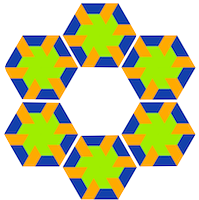For the past month, I have been working on a new iPad Web application that recently was launched at 6hoek.com. This application provides easy access to the complete product catalog of the Dutch online webshop bol.com.
Because it is targeted to owners of tablet devices such as the Apple iPad, I decided to embrace the upcoming JQuery Mobile framework (JQM), an open-source Javascript library that provides an unified UI to various mobile devices.
rendersnake is a Java library for creating components and pages that produce HTML using only Java. Its purpose is to support the creation of Web applications that are better maintainable, allows for easier reuse, have testable UI components and produces compact HTML in an efficient way.
This blog post explains how to start from a carefully designed rich HTML page and create new or use the components available in the library.
renderSnake is a open-source library for creating components that produce HTML using only Java. By defining Java classes for HTML components and pages you can exploit all the language features (e.g. inheritance, composition, type-checking) and IDE tooling (e.g. refactoring, unit-testing, references search, debugging,…). In addition, renderSnake is designed to produce compact HTML in an memory efficient way.
The "V" in MVC Basically, renderSnake is responsible for the presentation layer of a Web application.
The site soek.goodies.st gives access to the sources of open-source Smalltalk libraries and frameworks. A big advantage to developers is that they can explore Smalltalk classes without having to successfully load them into one of the Smalltalk dialect platforms. Recently, I have changed much of the Smalltalk generator and HTML/Javascript generated code.
Formerly, all Smalltalk source was highlighted using a client-side Javascript library. This resulted in long page loading times because it had to iterate through all DOM elements and replace the HTML content by a post-processing (using regex) result.
Melissa is a simple tool that can help in building development and runtime images in a continous integration environment. It is being used extensively to create daily builds for Smalltalk images. This post describes the steps to use Melissa for VA Smalltalk 8+.
The intended way to use Melissa is to start with a clean VA image, load the Melissa config app and save it as melissa.im. In order to tell Melissa what to build, you need to start that image passing the command line parameter “-melissa buildscript.
JNIPort for VisualWorks provides a way to use Java and its huge number of available libraries directly from Smalltalk.
For example, to access the Google Spreadsheets APIs and Tools, you need to download the Java client libraries and all its dependencies. The paths to there Jars must be known to the JVM and can be set through JNIPort. For easy deployment, I put together a single jar using an Ant build script such that the Runtime settings could be:
One way to build applications for the iPhone is to create a Web application that tries to look and behave like a native one. Currently, many Javascript libraries are being developed that try to accomplish just that. One of the big reasons for choosing this route is that developing such applications is so much easier compared to the Apple-way (learn Objective-C, build and test on the local emulator and try to get it accepted by AppleStore).
Soek is a Smalltalk application that provides a different way to navigate through documentation and source code of a Smalltalk library. Instead of the classic multi-list browser view in an image, Soek offers a flat view on all methods and classes and is build using the Seaside Web framework.
missing image /2009/11/screen-shot-2009-11-13-at-6-33-24-pm.png I discovered this way of publishing a framework when I worked with Rails and did most of my searches on Railsbrain.
If you want an existing package to register as a WebVelocity one and as a result make it visible to the browser page, you can evaluate this script:
(Store.Registry packageNamed: 'Your-Package-Name') propertyAt: #application put: true; propertyAt: #namespace put: 'Your-Namespace'; propertyAt: #velocityThemeName put: 'Default'. which I found when looking for the newApplication functionality in the image.
Logging can be very helpful in analyzing the (faulty) behavior of a server application in response to client requests. HypertextLogger is a simple component that produces HTML in response to logging instructions. Its main purpose it to provide a better readable log file. By choosing you favorite CSS, you can highlight what is important and leave other information unfocused (timestamps).
missing image /2009/06/hypertextlogger.png Upon creation of the logger, it produces a new .
